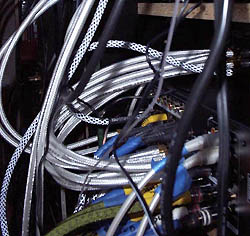
Durability and flexibility may be opposing demands. One can come at the expense of the other.
Durability may come in the form of strain relief, termination, the outer jacket and the materials used inside the cable. The outer jacket surrounds the individual conductors and is intended to protect the shielding and conductors from the elements.
While outer jackets are commonly made of polyvinyl chloride, differing chemical compositions and blends can yield a similar look with vastly differing strengths and ranges of flexibility.
A cable that is thicker might look and feel more durable, and if that size is due to a double-thick outer jacket, flexibility can actually be increased. Simply, the cable can be more impervious to damage, meaning it can be used in more applications.
The size of conductors, as well as the types of shielding, also impact durability and flexibility. Understand that everything comes at a price. A more durable cable will (and should) cost more. You get what you pay for.
The term strain relief refers to the relief of strain at the point where a connector attaches to a cable—the termination point. Strain can come from several different sources, such as pulling on the cable rather than grasping the connector to disconnect; stepping and pulling on the cable; repeated tight coiling, flexing and other common abuses.
Sonics
The sonics of a cable (or its “sound quality”) can be assessed in several ways. Like loudspeakers and amplifiers, cable can “color” sound based on shielding and/or conductivity.
Capacitance and inductance affect frequency response the most. Look at the capacitance per foot figure to evaluate how the high-frequency response may be affected over long runs. It’s usually measured in per foot (pF), so short lengths aren’t affected much.
The materials used as the inner conductor insulators also affect the capacitance and the signal propagation.
Beyond this, it’s vital to listen for noise and hum, both with and without signal present. Any extraneous noise can be prime indicator of poor construction techniques or substandard materials.
It’s important to listen to a length of cable with it terminated properly at the source end. An open-ended cable will have an extremely high impedance, making it act like an antenna—as soon as a mic is plugged in, the noise disappears.
